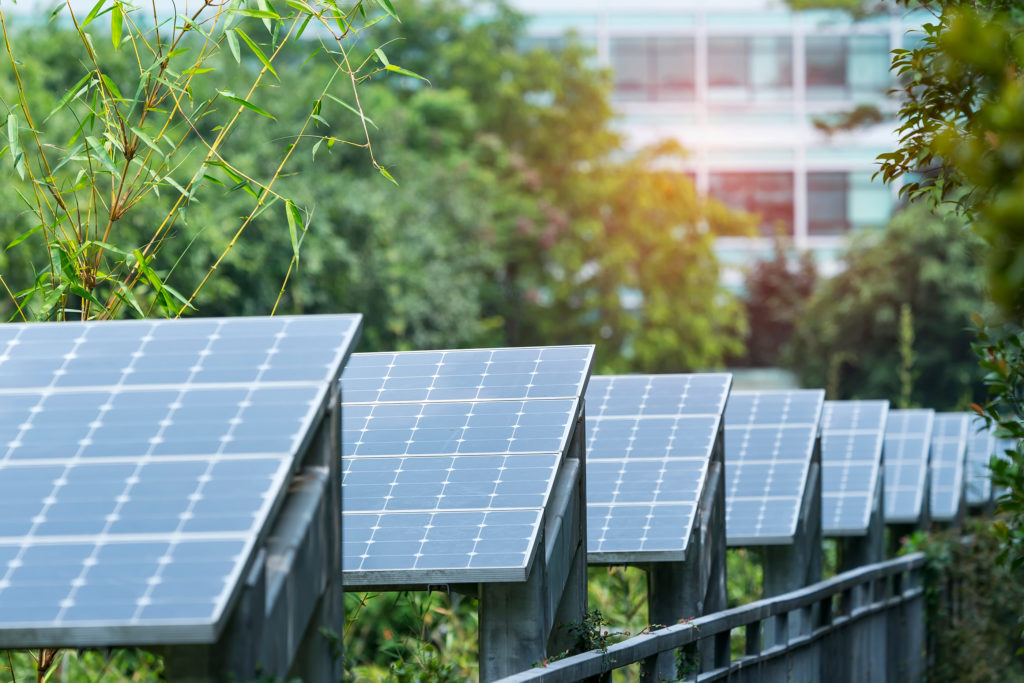Global Outlook for Renewable Energy Investments
Renewable energy will march forward this year, due to “remorseless reductions in the costs of solar and wind electricity and of lithium-ion batteries,” Angus McCrone, the chief editor of Bloomberg New Energy Finance (BNEF) wrote in a commentary.

Less investment in renewables
Among the noted observations was that solar investments in 2018 tumbled to USD 130.8 billion mainly due to lower capital costs. With wind and solar infrastructure costs falling drastically every year, there needs to be demand for more and more capacity to match dollar value investments of previous years. While this may seem like an issue, it simply means that for every dollar invested in renewables, investors are receiving more capacity. BNEF’s global benchmark for the cost of installing a PV megawatt was down 12% in 2018 as the module supply glut forced photovoltaics (PV) makers to cut selling prices last year.
Solar findings
Global solar capacity additions rose to 109 GW in 2018 from 99 GW a year back as other countries “took advantage of the technology’s fiercely improved competitiveness,” said Jenny Chase, head of solar analysis at BNEF. She expects installations in the range of 125 GW to 141 GW in the year 2019. In the next 2 decades, there is expected 7% yearly growth and solar will became main source of energy in 2040. In Europe there is expected 50 to 70% share of solar power but in the world from 30 to 50%.
Wind findings
In contrast to the drop in solar investment, spending on wind climbed by 3% to USD 128.6 billion, mainly driven by the offshore wind sector. “Countries such as the UK and Germany pioneered this industry and will remain important, but China is taking over as the biggest market and new locations such as Taiwan and the US East Coast are seeing strong interest from developers,” commented David Hostert, head of wind analysis at BNEF.
Wind capacity additions reached 53.5 GW in 2018 and are expected to surpass 70 GW in 2019, according to David Hostert. This will be mainly due to onshore wind installations in Northern Europe, China and the US, and a rise in offshore wind from 4.8 GW to 8.5 GW in Europe and Asia.
Other renewables
Spending on biomass and waste-to-energy projects was up 18% to USD 6.3 billion, while biofuels lured USD 3 billion, up 47% in annual terms.
Investment in the geothermal sector rose by 10% to USD 1.8 billion but shrank by 50% in the small hydropower segment to USD 1.7 billion. Spending on marine energy project increased by 16% to USD 180 million.
Money spent on smart meter rollouts and electric vehicle company financings also increased.
Clean energy will also make huge strides because of the “widening realization on the part of investors and corporations that there is this ‘sustainability thing’ and, for reasons of self-interest, they just need to do it,” McCrone added.
Energy investment costs decrease, capacities increase
BNEF sees total clean energy investment hovering at approximately $300 billion, down from last year’s $332.1 billion. But while investment totals are projected to decrease this year, as time marches on and costs continue to fall, every dollar invested brings more renewable energy capacity.
For example, BNEF predicts that the world will add between 125 and 141 GW of new solar this year, sharply up from the ~109 GW added in 2018. For wind, BNEF sees capacity additions of 70 GW in 2019, up from 53.5 GW last year.
This is more than an industrial transformation, this is also about a change in society. Citizens’ expectations are getting higher and higher. In response to an economic growth model that has, until now, prevailed at the expense of the planet, there is a profound desire to change this model, to pay more heed to the social, societal and environmental issues involved in economic activity, and to prioritise goods and services that reconcile the common good with individual interests.
At SunContract we are certain that the shift to a zero-carbon economy is irreversible. Which is why we continue to position ourselves at the front of these developments. Why not join us in pioneering the energy transition using pioneering digital technologies such as blockchain? It’s easy!

